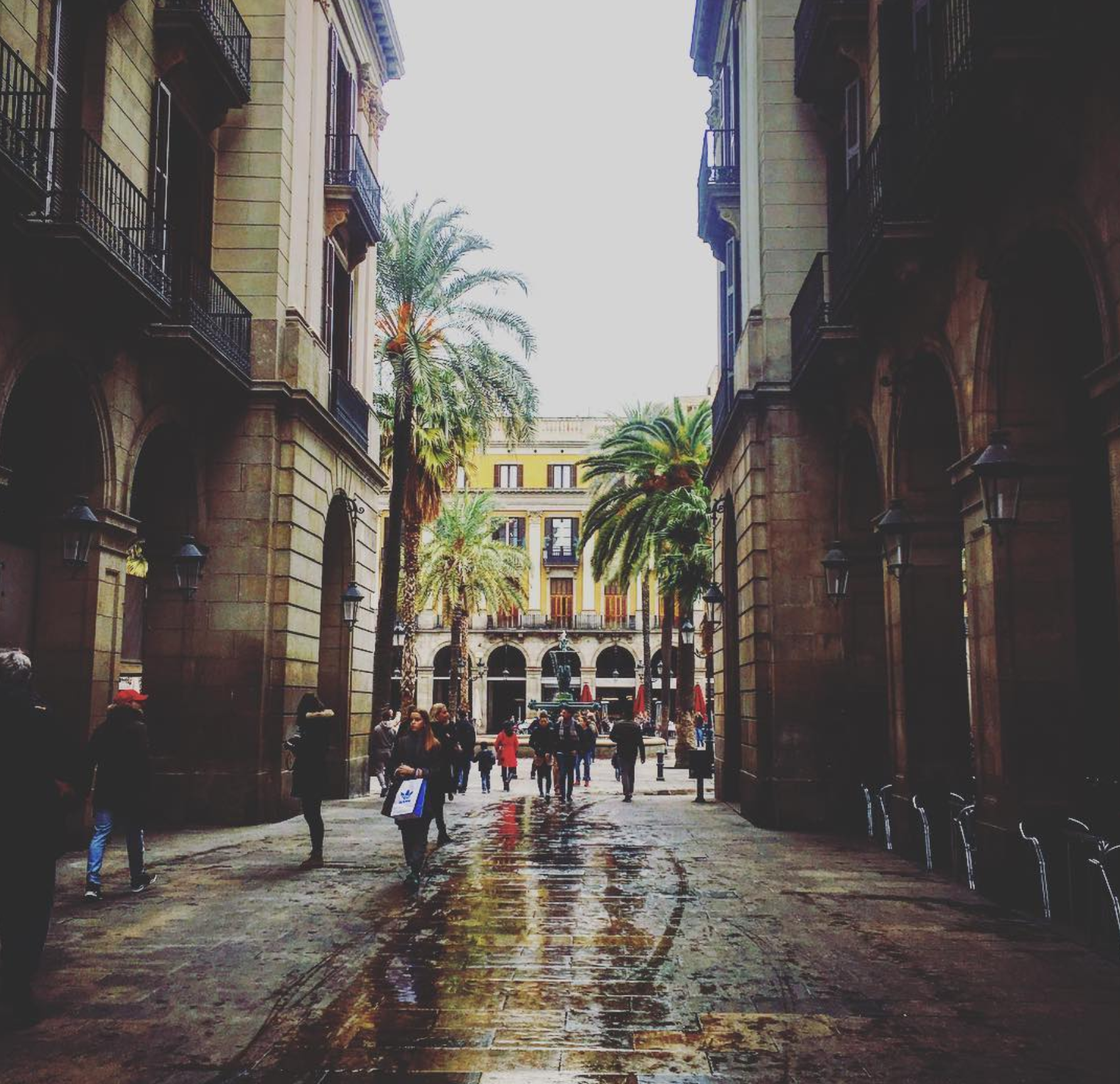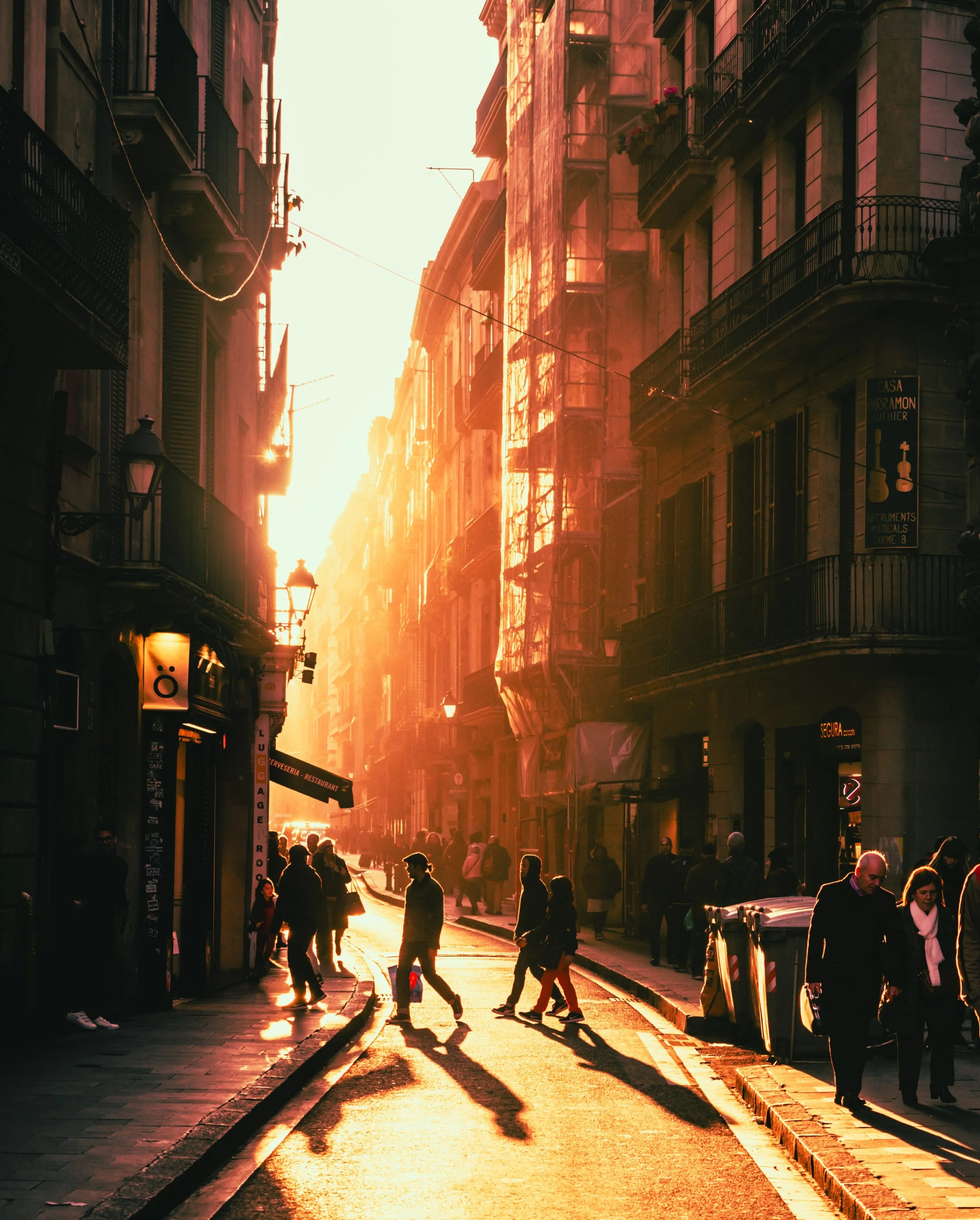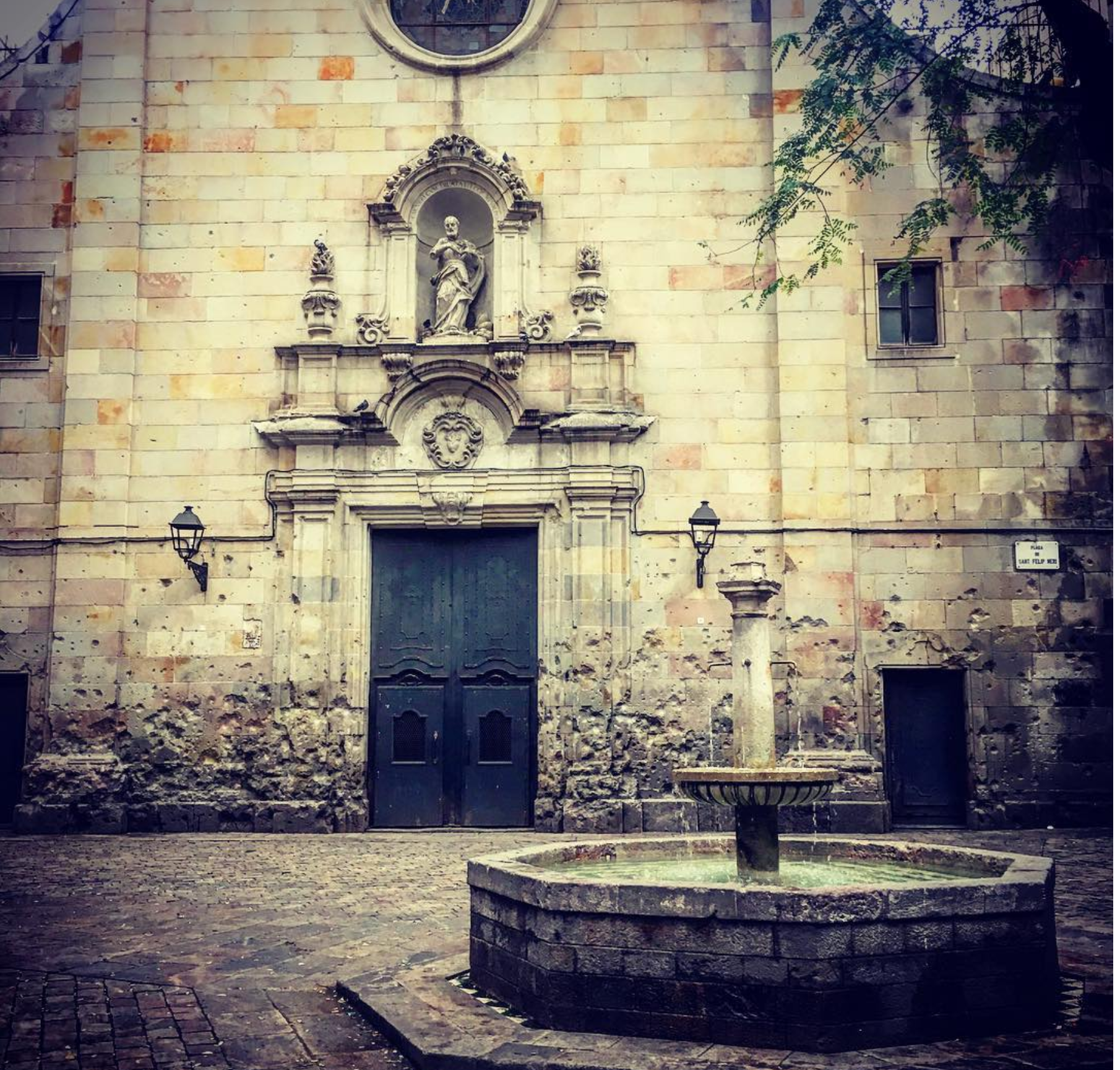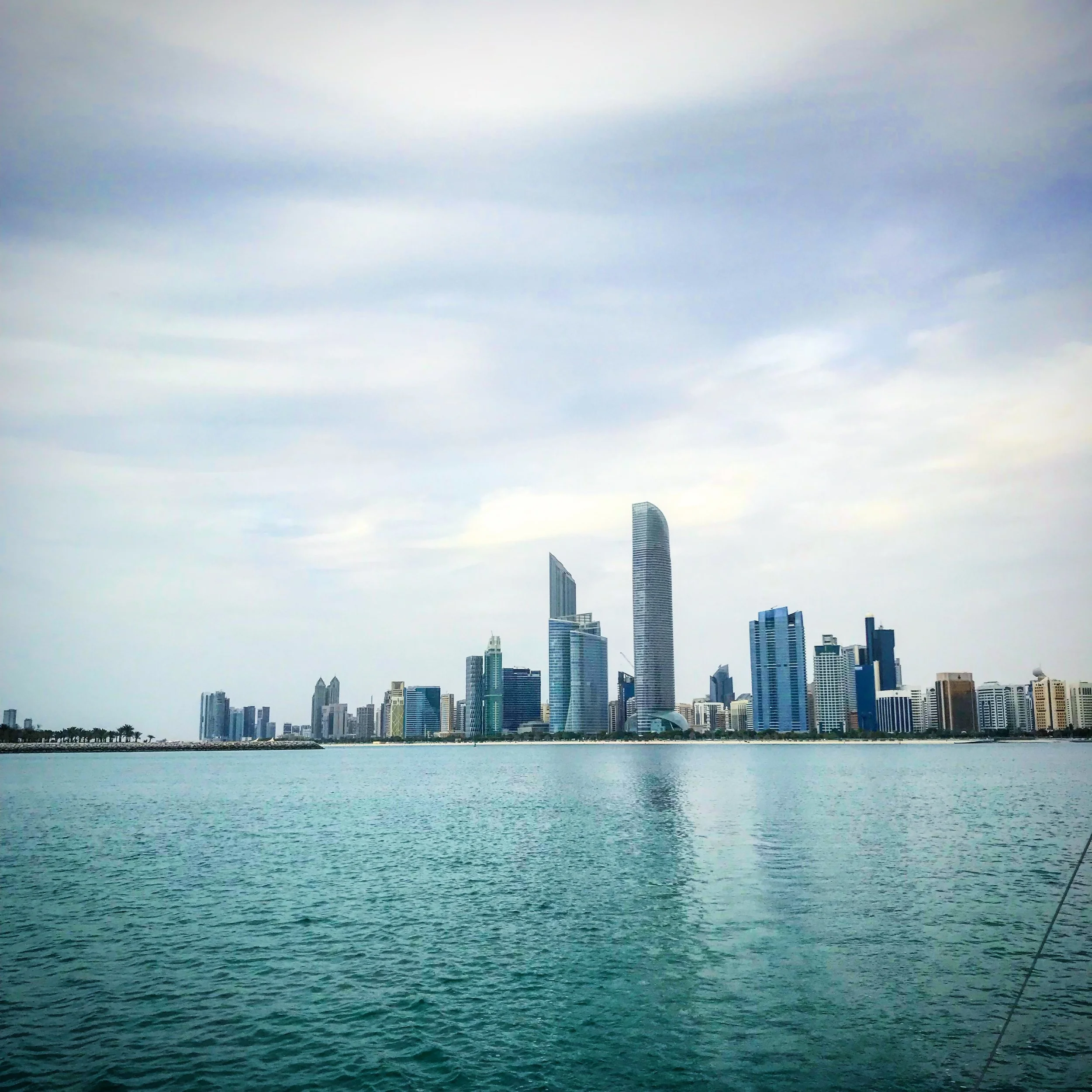Touring Barcelona with The Shadow of the Wind
Touring Barcelona with The Shadow of the Wind
One of the greatest pleasures of a holiday is having the time to sit and read a book. Sometimes it’s a cheap paperback you plucked off the shelf in the airport bookshop; sometimes it’s the novel that spent the last nine months gathering dust on your bedside table; sometimes it’s the book against which you rate all future pieces of writing.
For me, that book is The Shadow of the Wind by Carlos Ruiz Zafon. I hadn’t heard of it or the author until I met my husband—it’s his favourite book. You can learn all you need to know about a person by reading the book that resonates with them most—my favourite is Watership Down.
I was handed his (pristine) copy and set about to reading it; within eight hours, I’d devoured it. Set in Barcelona, Zafon weaves a tale of mystery and intrigue among an atmosphere so dark and haunting you can’t help but envisage tendrils of mist snaking through the streets of the city, following the main characters on their journey.
One of the other greatest pleasures of a holiday is having the opportunity to discover the city which so inspired an author and stirred such emotion that it’s tangible in the various descriptions. Fortunately for the literary traveller, most of the prime locations in the story can be found in the old city, putting them within walking distance from each other. If you’re looking for a journey off the beaten path, step away from the guide books and discover Barcelona through Daniel’s eyes.
‘You’re wrong about Barcelona, too, because you may think you’ve seen everything, but I can guarantee that’s not true. If you’ll allow me, I can prove it to you.’
The Shadow of the Wind is set in post-war Barcelona, 1945, where the city lies in the shadows licking its wounds. Daniel Sempere lives with his widower father above the family bookshop and wakes up on his eleventh birthday distraught to find he’s forgotten his mother’s face. His father consoles him by initiating him into the Cemetery of Forgotten Books, a repository where the world’s forgotten books await someone to care about them again. The tradition is to choose a book to protect—which book you choose depends on which speaks to you the most. Daniel wanders the spiralling labyrinth until he finds The Shadow of the Wind by Julian Carax.
‘I was raised among books, making invisible friends in pages that seemed cast from dust and whose smell I carry on my hands to this day.’
Like most readers of the Zafon novel, Daniel devours Carax’s book and wants more. To his shock, he finds that someone has been systematically destroying every copy of every book this author has ever written. Furthermore, he may have the very last Carax book in his possession. As he navigates growing up in post-war Barcelona, he and those closest to him investigate this strange book-burner and quickly find themselves embroiled in one of Barcelona’s darkest secret tales of murder, madness and doomed love.
Not only is it a gripping epic of intrigue, it’s a love story to the power of books, and a thought-provoking tour guide for one of Europe’s most beloved cities.
The tour
Start with Calle Santa Ana (Carrer de Santa Anna), home to the Sempere & Sons bookshop. Located just off Placa de Catalunya, this street is bustling and cosy, evoking a sense of old-town charm. Sempere & Sons may be a fictional location but there are plenty of shops (and a bookshop or two!) upon which to superimpose the image of a young Daniel living and working with the family business.
‘Once, in my father’s bookshop, I heard a regular customer say that few things leave a deeper mark on a reader than the first book that finds its way into his heart.’
Step out of Calle Santa Ana and emerge onto La Rambla (Rambla de Santa Monica), Barcelona’s main thoroughfare. Beautiful, full of life and connecting tourists and locals alike to Barcelona’s beating heart, La Rambla is also where the book begins, as Daniel and his father walk down to the Cemetery of Forgotten Books. It’s impossible to tour this city without a walk down La Rambla and there’s plenty to discover everywhere you look.
‘It was the early summer of 1945, and we walked through the streets of a Barcelona trapped beneath ashen skies as down poured over Rambla de Santa Monica in a wreath of liquid copper.’
Meander down La Rambla, to Placa Reial (Plaza Real), an open square resplendent with palm trees and lanterns strung from archways. One of Barcelona’s most beautiful places, Placa Reial is a crucial location for the Shadow of the Wind—Daniel first meets Clara, his first love, and Fermin, the man who becomes his closest confidant. Stop here for a quiet moment or two by one of the fountains or a (slightly more expensive) dinner and drinks in the evening in a glorious setting.
‘We set off towards the square, where a knot of old folks hovered around the local pigeon community, their lives reduced to a ritual of spreading crumbs and waiting.’
Continue down La Rambla and you’ll reach a magnificent roundabout guarded by bronze statues of lions watching every corner of the city. But resist the siren song of the beach and the harbour for a little longer and veer right to Calle Arco del Teatro (Carrer de l’Arc de Teatre). This winding alleyway is home to the Cemetery of Forgotten Books. As Barcelona’s most prized secret, you won’t find signposts or neon lights, but any one of the myriad doorways down this street could be imagined as the entrance to that pivotal location.
‘Every book, every volume you see here, has a soul. The soul of the person who wrote it and of those who read it and lived and dreamed with it. Every time a book changes hands, every time someone runs his eyes down its pages, its spirit grows and strengthens.’
For a spot of shopping, head to the ‘left hand corner of Calle del Call (Carrer de la Libretaria) and Calle Freneria’, and find the two pretty streets in the picturesque surroundings of Port Vell (the Old Harbour). On this corner, you’ll find the (fictional) fountain pen shop where Daniel is entranced by the fancy Montblanc Meisterstuck pen that supposedly belonged to Victor Hugo himself and was used to write Les Miserables. Unlikely, but what child dreaming of writing a masterpiece of his own wouldn’t fall for that magical tale?
‘I was secretly convinced that with such a marvel one would be able to write anything, from novels to encyclopaedias, and letters whose supernatural power would surpass any postal limitations—a letter written with that pen would reach the most remote corners of the world, even that unknowable place to which my father said my mother had gone and from where she would never return.’
Back up from Carrer de Josep Anselm Clave and make your way to Parc de la Ciutadella via Carrer Montcada. This lovely street was the location that provided Zafon with the inspiration for the fictional Santa Lucia Hospice, an important location where Daniel discovers the tragic love story that provides the spark for the whole mystery. Again, choose a door to imagine through which Daniel and Fermin would have entered to meet Jacinta Coronada. As you make your decision, you’ll also find the Picasso Museum and the Santa Maria del Mar church.
‘Jacinta never told Penelope that she loved her. The nurse knew that those who really love, love in silence, with deeds and not with words.’
One of the few locations in the book that actually exist, the Els Quatre Gats is a quaint and adorable restaurant on Carrer de Monstio, close to Carrer de Santa Anna. Inspired by Le Chat Noir in Paris, Daniel and Fermin often dined here, in the shadows of the more famous people who also enjoyed the restaurant: Picasso, renowned architect Gaudi and pianist and composer Isaac Albeniz.
‘You can come share a tasty meal of bread, raisins, and fresh cheese. With that, and The Count of Monte Cristo, anyone can live to a hundred.’
Your penultimate stop is the last one in the city centre, Plaza de San Felipe Neri. A beautiful square with a very dark past, a building by the entrance to the square was occupied by Nuria Munfort, one of the people who helped Daniel understand Julian Carax’s story. Though the square is peaceful now, in 1938, Francisco Franco laid siege to the city of Barcelona, and on 30 January, one of the bombs fell on the church in the square, killing 30 people, most of whom were children from the School of Sant Philip Neri, and some of whom were refugee children from Madrid where the church had been turned into a makeshift orphanage. As people pulled survivors from the rubble, a second bomb hit the square, killing 12 more people. It was the second worst bombing hit in Barcelona during the Spanish Civil War and the church retains its pockmarked walls and a plaque to those who lost their lives.
‘Plaza de San Felipe Neri is like a small breathing space in the maze of streets that crisscross the Gothic quarter, hidden behind the old Roman walls.’
Finally, find your way to Tibidabo to visit The Angel of Mist, the Aldaya residence. This house features heavily in the latter part of the book, making it a fitting final stop. According to The Shadow of the Wind, The Angel of Mist can be found at Avenida del Tibidabo, 32. Once you’ve spent enough time staring at someone’s house, you can take the Funicular del Tibidabo, the famous blue tram, up to the summit of Tibidabo mountain and gaze at the spectacular view of Barcelona below you.
‘This city is a sorceress, you know, Daniel? It gets under your skin and steals your soul without you knowing it.’




















Tour operators are slashing 2019 summer package prices by as much as 36 percent but you still need to protect your pounds abroad. Caxton FX is here to explain how.